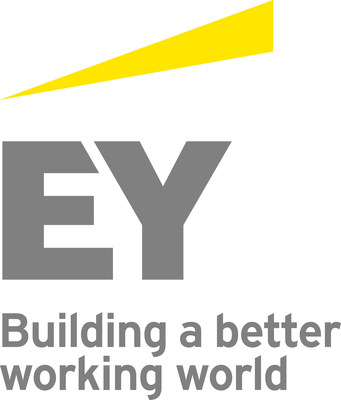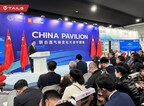Fintech PR
Semiconductor & IC packaging materials Market worth $70.9 billion by 2029 – Exclusive Report by MarketsandMarkets™
CHICAGO, March 25, 2024 /PRNewswire/ — The report “Semiconductor & IC Packaging Materials Market by Type (Organic substrate, Bonding wires, Leadframes, Encapsulation resins, Ceramic packages, Die attach materials, Solder balls), Packaging Technology, End-use industry, and Region – Global Forecast to 2029″, is USD 43.9 billion in 2024 and is projected to reach USD 70.9 billion by 2029, at a CAGR of 10.1%.
The semiconductor and IC packaging materials market is propelled by several key drivers. These include the increasing demand for advanced packaging solutions driven by technological advancements in semiconductor devices, the growing market for consumer electronics and IoT devices, the need for compact and lightweight packaging materials, and the rising trend of miniaturization in electronics. Additionally, factors such as the emergence of new applications like autonomous vehicles and 5G technology, along with the expansion of the semiconductor industry in regions like Asia Pacific, contribute significantly to the growth and evolution of the semiconductor and IC packaging materials market.
Browse in-depth TOC on “Semiconductor & IC packaging materials Market”
140 – Tables
40 – Figures
200 – Pages
Download PDF Brochure: https://www.marketsandmarkets.com/pdfdownloadNew.asp?id=31363123
Small outline package (SOP) by packaging technology is projected to be the largest, in terms of value, during the forecast period
The dominance of small outline package (SOP) technology in the semiconductor and IC packaging materials market stems from its numerous advantages. First and foremost, SOPs excel in compactness and low profile, making them ideal for applications with space constraints like mobile devices, wearables, and IoT gadgets. This compact design not only reduces material usage but also lowers package weight, crucial for industries focusing on lightweight and portable electronics. Moreover, SOPs boast a small lead pitch, allowing for higher pin density and better integration of semiconductor components, thereby enhancing functionality within a smaller footprint. Additionally, SOPs are compatible with surface mount technology (SMT), enabling automated assembly processes that enhance production efficiency and cut manufacturing costs. This compatibility also improves thermal management as SOPs can be directly mounted onto the PCB, enhancing heat dissipation and device reliability. The versatility of SOP technology is evident in its various package configurations, such as SOP-8, SOP-16, and SOP-28, catering to a broad spectrum of semiconductor applications and needs. Furthermore, SOPs deliver strong electrical performance with low parasitic capacitance and inductance, vital for high-speed digital and analog applications. They also offer robust protection against environmental factors like moisture and mechanical stress, ensuring the durability and reliability of semiconductor devices. In essence, the amalgamation of compactness, high pin density, SMT compatibility, thermal management capabilities, versatility, and excellent electrical performance positions SOP technology as the preferred choice in the semiconductor and IC packaging materials market.
Organic substrate by type is projected to be the largest, in terms of value, during the forecast period
The organic substrate segment reigns as the dominant type in semiconductor and IC packaging materials for several key reasons. Firstly, organic substrates, notably printed circuit boards (PCBs), offer a cost-effective solution compared to alternatives like ceramic packages. This cost efficiency is pivotal in mass production, aligning well with the semiconductor industry’s pursuit of economies of scale. Furthermore, organic substrates boast excellent electrical insulation properties, crucial for averting electrical shorts and preserving signal integrity within packages. Their versatility enables intricate designs and the integration of multiple components on a single board, providing flexibility in packaging solutions for diverse semiconductor applications. Their lightweight nature, contrasting with materials such as leadframes or ceramics, aids in system miniaturization and enhances electronic device portability. Additionally, organic substrates are easily manufactured using standard PCB fabrication processes, resulting in faster production cycles and reduced time-to-market for semiconductor products. Technological advancements in organic substrate materials, such as high-speed laminate materials and low-loss dielectrics, have further bolstered their performance in terms of signal transmission and thermal management, rendering them a favored choice for modern semiconductor packaging. In summary, the amalgamation of cost-effectiveness, electrical insulation, design flexibility, lightweight properties, ease of manufacturing, and ongoing technological enhancements firmly establishes organic substrates as the leading segment in semiconductor and IC packaging materials.
Request Sample Pages: https://www.marketsandmarkets.com/requestsampleNew.asp?id=31363123
Consumer electronics by end-use industry segment is projected to be the largest, in terms of value, during the forecast period
Consumer electronics leads the semiconductor and IC packaging materials market due to robust demand across diverse products like smartphones, tablets, laptops, and wearables. These devices drive the need for advanced packaging materials to meet performance and miniaturization demands. Additionally, rapid innovation in technologies such as AI, AR, and IoT requires packaging materials supporting high-speed data processing and thermal management. Cost-effective solutions and global market adoption further boost the demand, driving economies of scale and innovation in packaging technologies. Consumer preferences for sleek, energy-efficient devices also influence material choices, making consumer electronics the key driver of growth in this market.
Asia Pacific is expected to be the fastest growing market for semiconductor & IC packaging materials during the forecast period, in terms of value
Asia Pacific has emerged as the leading market for semiconductor and IC packaging materials, driven by its role as a global electronics manufacturing powerhouse featuring major players such as China, Japan, South Korea, Taiwan, and Singapore, all boasting robust semiconductor ecosystems. This region’s strong focus on technological innovation, especially exemplified by leaders like South Korea and Japan, fuels the demand for cutting-edge packaging materials that can meet the demanding standards of advanced semiconductor devices. Additionally, Asia Pacific benefits from a thriving consumer electronics sector, fueled by increasing disposable incomes and the rapid digitalization of society. This sector heavily relies on semiconductor and IC packaging materials for a wide array of products including smartphones, laptops, wearables, and automotive electronics. Furthermore, Asia Pacific’s strategic advantages as a cost-effective manufacturing hub with efficient supply chains and a skilled workforce further reinforce its dominance in the semiconductor industry. Government initiatives and favorable business environments in key countries such as China, Taiwan, and Singapore play a crucial role in enhancing the region’s position as the primary driver of growth and innovation in the global semiconductor and IC packaging materials market.
Key Players
The key players in this market are LG Chem Ltd. (South Korea), Jiangsu ChangJian Technology Co., Ltd. (China), Henkel AG & Co. KGaA (Germany), Kyocera Corporation (Japan), ASE (Taiwan), Siliconware Precision Industries Co., Ltd. (Taiwan), Amkor Technology (US), Texas Instruments (US), IBIDEN CO., LTD. (Japan), Powertech Technology Inc. (Taiwan) etc.
Browse Adjacent Market: Advanced Materials Market Research Reports & Consulting
Related Reports:
Semiconductor Chemical Market – Global Forecast to 2028
About MarketsandMarkets™
MarketsandMarkets™ has been recognized as one of America’s best management consulting firms by Forbes, as per their recent report.
MarketsandMarkets™ is a blue ocean alternative in growth consulting and program management, leveraging a man-machine offering to drive supernormal growth for progressive organizations in the B2B space. We have the widest lens on emerging technologies, making us proficient in co-creating supernormal growth for clients.
Earlier this year, we made a formal transformation into one of America’s best management consulting firms as per a survey conducted by Forbes.
The B2B economy is witnessing the emergence of $25 trillion of new revenue streams that are substituting existing revenue streams in this decade alone. We work with clients on growth programs, helping them monetize this $25 trillion opportunity through our service lines – TAM Expansion, Go-to-Market (GTM) Strategy to Execution, Market Share Gain, Account Enablement, and Thought Leadership Marketing.
Built on the ‘GIVE Growth’ principle, we work with several Forbes Global 2000 B2B companies – helping them stay relevant in a disruptive ecosystem. Our insights and strategies are molded by our industry experts, cutting-edge AI-powered Market Intelligence Cloud, and years of research. The KnowledgeStore™ (our Market Intelligence Cloud) integrates our research, facilitates an analysis of interconnections through a set of applications, helping clients look at the entire ecosystem and understand the revenue shifts happening in their industry.
To find out more, visit www.MarketsandMarkets™.com or follow us on Twitter, LinkedIn and Facebook.
Contact:
Mr. Aashish Mehra
MarketsandMarkets™ INC.
630 Dundee Road
Suite 430
Northbrook, IL 60062
USA: +1-888-600-6441
Email: [email protected]
Research Insight: https://www.marketsandmarkets.com/ResearchInsight/semiconductor-ic-packaging-materials-market.asp
Visit Our Website: https://www.marketsandmarkets.com/
Content Source: https://www.marketsandmarkets.com/PressReleases/semiconductor-ic-packaging-materials.asp
Logo: https://mma.prnewswire.com/media/2297424/MarketsandMarkets_Logo.jpg
![]() View original content:https://www.prnewswire.co.uk/news-releases/semiconductor–ic-packaging-materials-market-worth-70-9-billion-by-2029–exclusive-report-by-marketsandmarkets-302096990.html
View original content:https://www.prnewswire.co.uk/news-releases/semiconductor–ic-packaging-materials-market-worth-70-9-billion-by-2029–exclusive-report-by-marketsandmarkets-302096990.html

Fintech PR
Joe Depa named as EY Global Chief Innovation Officer to lead its global innovation strategy

- Depa will lead on the discovery and deployment of emerging technologies to help address business challenges and shape the future with confidence
- Brings deep experience in identifying new ways that can practically help business transformation through an innovation mindset and culture shift
LONDON, Nov. 26, 2024 /PRNewswire/ — The EY organization announces today the appointment of Joe Depa as the new EY Global Chief Innovation Officer, effective immediately. Within this role, he will spearhead applied innovation to help improve service delivery and guide EY teams to address and solve business challenges.
Depa joins the EY organization at a pivotal moment, as a range of emerging technologies are reshaping businesses and industries, creating a multitude of new challenges and opportunities. To keep pace, the EY organization is continuing to make significant investments in areas such as artificial intelligence (AI), quantum computing and blockchain, and most recently formed the EY.ai Global AI Advisory Council.
In his new role, Depa will be leading the organization’s global innovation strategy. This will include overseeing efforts to successfully implement emerging technologies for tangible business applications, both internally and across work of EY member firms with clients.
Raj Sharma, EY Global Managing Partner of Growth and Innovation, says:
“At this time of constant disruption, success would require a forward-thinking approach and willingness to make bold decisions, which are at the heart of an innovative mindset. We’re thrilled to have Joe’s deep experience and knowledge around AI and data to lead on our strategic approach to innovation so that EY teams can help clients shape their future more confidently.”
Throughout the last decade, Depa has worked closely with C-suite leaders and boards to bring innovative products and services to market, improve client and employee experiences, and help enhance operational efficiencies through technology. Most recently, he served as the inaugural Chief Data and AI Officer at a leading university and health care organization. At the university, he helped to promote AI literacy, launch a responsible AI governance program and enable a secure data foundation. Prior to that, he acted as Senior Managing Director and Global Lead for Data and AI at a global multinational professional services company, where he led a team of AI strategists and data engineers in developing and implementing new products and services.
Joe Depa, EY Global Chief Innovation Officer, says:
“I’m truly excited to join an organization that is ‘All in’ on its commitment to the transformative potential of emerging technologies. I look forward to working with the EY teams and clients to help empower them to apply innovation in bold, new ways that help create value for clients through data, AI and emerging technologies to make the world a better place.”
A renowned thought leader in the field of AI, Depa has been recognized as one of the “Top 50 Global Leaders” by World Summit AI and has received Fast Company’s “World Changing Idea” award, among other accolades.
For more information, visit: ey.com.
About EY
EY is building a better working world by creating new value for clients, people, society and the planet, while building trust in capital markets.
Enabled by data, AI and advanced technology, EY teams help clients shape the future with confidence and develop answers for the most pressing issues of today and tomorrow.
EY teams work across a full spectrum of services in assurance, consulting, tax, strategy and transactions. Fueled by sector insights, a globally connected, multi-disciplinary network and diverse ecosystem partners, EY teams can provide services in more than 150 countries and territories.
All in to shape the future with confidence.
EY refers to the global organization, and may refer to one or more, of the member firms of Ernst & Young Global Limited, each of which is a separate legal entity. Ernst & Young Global Limited, a UK company limited by guarantee, does not provide services to clients. Information about how EY collects and uses personal data and a description of the rights individuals have under data protection legislation are available via ey.com/privacy. EY member firms do not practice law where prohibited by local laws. For more information about our organization, please visit ey.com.
This news release has been issued by EYGM Limited, a member of the global EY organization that also does not provide any services to clients.

Photo – https://mma.prnewswire.com/media/2567765/EY_Joe_Depa.jpg
Logo – https://mma.prnewswire.com/media/381362/EY_Logo.jpg
![]() View original content:https://www.prnewswire.co.uk/news-releases/joe-depa-named-as-ey-global-chief-innovation-officer-to-lead-its-global-innovation-strategy-302316944.html
View original content:https://www.prnewswire.co.uk/news-releases/joe-depa-named-as-ey-global-chief-innovation-officer-to-lead-its-global-innovation-strategy-302316944.html

Fintech
Fintech Pulse: A Daily Dive into Industry Innovations and Developments

The financial technology sector continues to evolve at a rapid pace, offering innovations that disrupt traditional paradigms. Today’s briefing underscores fintech’s diverse growth avenues: from substantial venture capital plays and strategic partnerships to groundbreaking implementations in lending. Here’s a closer look at recent developments shaping the landscape.
Synapse’s Comeback and Andreessen Horowitz’s Strategic Bet
Source: Axios
Synapse, a financial infrastructure company previously embattled by controversy, is staging a remarkable comeback, backed by none other than venture capital heavyweight Andreessen Horowitz (a16z). With this new infusion of funds, Synapse aims to consolidate its position as a premier platform for building financial services tools.
This resurgence demonstrates the resilience of the fintech ecosystem, where innovation often prevails over turbulence. Synapse’s renewed vigor also signals that top-tier investors remain bullish on infrastructural solutions pivotal to the future of digital finance. Andreessen Horowitz’s participation not only validates Synapse’s model but also underscores the VC giant’s enduring interest in fintech infrastructure, even amid global economic uncertainties.
Analysis:
This partnership exemplifies the dynamism within fintech, highlighting the interplay of innovation, capital, and resilience. It also raises questions about the broader implications of giving second chances to firms with turbulent histories. While Synapse’s evolution could inspire others, it also places a spotlight on governance and accountability in high-growth sectors.
Israel’s Fintech Scene Gets a Boost with Investment in Finova Capital
Source: Calcalistech
Israeli fintech startup Finova Capital has raised an impressive $20 million in a funding round led by prominent institutional investors. This marks a significant milestone for the company as it seeks to expand its suite of financial solutions aimed at underserved markets.
Israel’s fintech ecosystem has long been recognized as a hub of innovation, and this latest investment only reinforces its global standing. Finova Capital’s focus on empowering smaller businesses and fostering financial inclusivity aligns with emerging trends where tech-driven solutions bridge critical gaps in financial services.
Analysis:
With this funding, Finova is poised to enhance its technological offerings while contributing to economic inclusion. However, the broader fintech industry will watch closely to see how the company leverages this capital amid increasing competition from regional and global players.
India’s Yubi Plans a Fundraising Push
Source: Bloomberg
Yubi, a prominent Indian fintech platform backed by Insight Partners, is reportedly preparing for a new fundraising round. Having already established itself as a leader in credit infrastructure, Yubi aims to bolster its offerings and expand its market footprint.
India’s fintech landscape is witnessing explosive growth, with platforms like Yubi playing a critical role in the credit ecosystem. Yubi’s planned fundraising reflects the broader appetite for scaling solutions that streamline credit access, particularly in emerging markets where traditional lending models often fall short.
Analysis:
This development highlights two key trends: the increasing reliance on credit platforms in high-growth economies and the strategic role of international investors like Insight Partners in driving fintech innovation. Yubi’s expansion plans could set a precedent for other regional fintech players seeking to scale amid global economic headwinds.
Provenir and Hastings Financial Services Win Global Recognition
Source: Business Wire
In a testament to the transformative power of digital lending solutions, Provenir and Hastings Financial Services have been jointly recognized for the Best Digital Lending Implementation at the IBSi Global Fintech Innovation Awards. This accolade underscores the success of their collaboration in modernizing the lending process through cutting-edge technology.
Provenir’s advanced decision-making platform and Hastings Financial Services’ lending expertise have delivered a solution that significantly enhances user experience, operational efficiency, and risk management. Such innovations highlight the increasing role of partnerships in advancing fintech’s digital transformation.
Analysis:
This recognition not only validates the efficacy of digital lending but also emphasizes the importance of partnerships in driving innovation. It signals to the industry that collaboration can be a powerful tool for staying ahead in a rapidly evolving marketplace.
Microf and Quantum Financial Technologies Forge New Alliances
Source: PR Newswire
Microf, a financial solutions provider, has announced a strategic partnership with Quantum Financial Technologies. This collaboration aims to expand lending solutions for contractors, providing streamlined access to capital for businesses in need of flexible financing options.
This partnership is a timely response to the growing demand for specialized financial products in niche markets. By leveraging Quantum’s technology, Microf can now offer more tailored solutions, particularly to contractors navigating complex financial requirements.
Analysis:
This development reflects a growing trend: the diversification of fintech offerings to serve specific market segments. As competition in mainstream fintech intensifies, targeting underserved niches could become a defining strategy for success.
Key Takeaways for the Fintech Ecosystem
- Resilience in Fintech Funding: Despite economic uncertainties, venture capital continues to fuel innovative fintech players like Synapse and Finova Capital.
- Regional Growth Stories: From Israel to India, fintech ecosystems are thriving, attracting global attention and investment.
- Collaboration as a Catalyst: The success of partnerships like Provenir-Hastings and Microf-Quantum underscores the importance of strategic alliances.
- The Power of Recognition: Awards like the IBSi Fintech Innovation Awards validate industry achievements, inspiring others to push the envelope.
- Focus on Inclusion: Whether through credit platforms or lending solutions, fintech is playing a pivotal role in fostering financial inclusivity worldwide.
Looking Ahead: Challenges and Opportunities
The fintech sector’s journey is far from linear. Regulatory complexities, technological disruptions, and market volatility remain persistent challenges. However, as seen in today’s developments, the opportunities far outweigh the risks. By prioritizing innovation, collaboration, and inclusivity, fintech players can navigate the complexities of the global financial landscape.
This moment in fintech history is pivotal. It’s a time for bold decisions, strategic partnerships, and a commitment to bridging financial divides. As industry players rise to the occasion, the road ahead promises a future where technology and finance intertwine to empower individuals and businesses alike.
The post Fintech Pulse: A Daily Dive into Industry Innovations and Developments appeared first on News, Events, Advertising Options.
Fintech PR
BIZCLIK MEDIA LAUNCHES DECEMBER EDITION OF FINTECH MAGAZINE
The December edition of FinTech Magazine includes interviews with leading experts and executives from Alipay+, Marqeta & Flyfish
LONDON, Nov. 26, 2024 /PRNewswire/ — BizClik, the UK’s fastest-growing publishing company, has released the latest edition of FinTech Magazine.This publication is highly regarded by voices within the Financial Sector for its in-depth reports and interviews with prominent figures in the industry.
FinTech Magazine
This month’s edition features an exclusive lead interview with Flyfish C-Suite, Savvas Pashias, Shay Merary and Michael Zetser on how they have developed a platform for SMEs to access banking services, as traditional infrastructure struggles to meet increasing cross-border needs.
“The UniFi platform is inherently scalable, designed to growin line with a company’s expansion and service requirements” – Michael Zetser, CEO, Flyfish
The edition also contains extensive interviews with key thought leaders from Marqeta, Sidekick, PayU and more. Plus the Top 10: Decacorns
You can visit FinTech Magazine for daily news and analysis of the ever-changing financial industry.
About BizClik
BizClik is one of the fastest-growing digital media companies in the UK, host to a growing portfolio of industry-leading global brands and communities.
BizClik’s expanding portfolio includes Technology, AI, FinTech, InsurTech, Supply Chain, Procurement, Energy, Mining, Manufacturing, Healthcare, Mobile, Data Centre, Cyber, and Sustainability.
For more information, please visit our website.
View original content:https://www.prnewswire.co.uk/news-releases/bizclik-media-launches-december-edition-of-fintech-magazine-302316768.html

-

 Fintech6 days ago
Fintech6 days agoFintech Pulse: Industry Updates, Innovations, and Strategic Moves
-

 Fintech5 days ago
Fintech5 days agoFintech Pulse: Daily Industry Brief – A Dive into Today’s Emerging Trends and Innovations
-

 Fintech PR6 days ago
Fintech PR6 days agoTAILG Represents the Industry at COP29, Advancing South-South Cooperation with Low-Carbon Solutions
-

 Fintech PR7 days ago
Fintech PR7 days agoROLLER Releases 2025 Attractions Industry Benchmark Report, Unveiling Key Trends and Revenue Strategies
-

 Fintech PR5 days ago
Fintech PR5 days agoAlkira Ranked 25th Fastest-Growing Company in North America and 6th in the Bay Area on the 2024 Deloitte Technology Fast 500™
-

 Fintech PR6 days ago
Fintech PR6 days agoThe CfC St. Moritz Announces New Speakers from BlackRock, Binance, Bpifrance, Temasek, PayPal, and More for Upcoming 2025 Conference
-

 Fintech PR5 days ago
Fintech PR5 days agoCorinex Ranked Number 331 Fastest-Growing Company in North America on the 2024 Deloitte Technology Fast 500™
-

 Fintech PR5 days ago
Fintech PR5 days agoCathay Financial Holdings Advances Climate Finance Leadership at COP29, Championing Public-Private Partnerships and Asia’s Low-Carbon Transition




